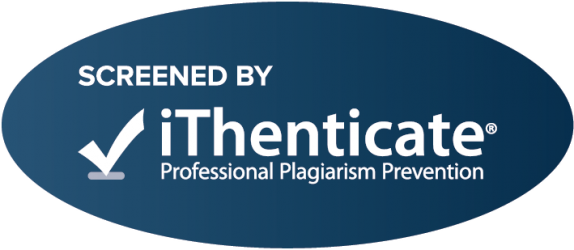A Case Study of Teaching Addition and Subtraction to a Student with Dyscalculia
Keywords:
Dyscalculia, mathematics learning disabilities, teaching addition and subtractionAbstract
In this study, it is aimed to teach the addition and subtraction processes to a student who is in third grade at elementary school and who has diagnostic as dyscalculia. Before preparing individualized program, the student was given a pretest to measure his level of the subject. The instruction was carried out in a room in the school, with a time of 40 minutes per day in the form of individual instruction with the student. In addition, the study was supported by a researcher-developed scenario booklet, concrete materials, computer games, reinforcement award, and assignments. A case study from qualitative research methods has been employed in the study. The data were analyzed using descriptive analysis technique. Results of the study indicate that the student achieved more than 90 % objectives on teaching basic addition and subtraction skills in the third grade. Gains have been actualized by the student with mathematic learning difficulties with over 90 % success in 63 individualized lessons. On the other hand, social validity data were collected through observation and interviews to identify strengths or weaknesses and changes occurring in the student work. As a result of the studies, it has been determined that the student gained self-confidence by enjoying his sense of accomplishment.Downloads
References
Amerikan Psikiyatri Birliği. “Ruhsal Bozuklukların Tanısal ve Sayımsal Elkitabı, Beşinci Baskı (DSM-5), Tanı Ölçütleri Başvuru Elkitabı’ndan”, çev. Köroğlu Ertuğrul. Ankara: Hekimler Yayın Birliği, 2013.
Baroody, J. Arthur. “The role of the number-after rule in the invention of computational shortcuts”. Cognition and İnstruction, 13 (2) (1995): 189-219.
Beacham, Nigel & Clare Trott. “Screening for dyscalculia within HE”. MSOR Connections, 5 (1), (2005): 1-4. Bender, William N. “Öğrenme Güçlüğü Olan Bireyler ve Eğitimleri”. (Çeviri editörü: Hakan Sarı), Ankara: Nobel Akademik Yayıncılık, 2014.
Browder Diana M., Bree A. Jimenez, Fred Spooner, Alicia Saunders, Melissa Hudson & Keri S. Bethure. “Early numeracy instruction for students with moderate and severe developmental disabilities”. Research & Practice for Persons with Severe Disabilities, 37 (4) (2012): 308-320.
Burns, Robert C., & S. Harvard Kaufman. “Kinetic family drawings (KFD): An introduction to understanding children through kinetic drawings”. New York, NY: Brunner/Mazel, 1970.
Butterworth, Brian. “The Mathematical Brain”. London: MacMillian, 1999.
Butterworth, Brian. “Dyscalculia Screener: Highlighting Pupils with Specific Learning Difficulties in Maths”. London, UK: Nelson Publishing Company, 2003.
Carpenter, Thomas P. & James M. Moser “The acquisition of addition and subtraction concepts in grades one through three”. Journal for Research in Mathematics Education, 15 (3) (1984): 179-202.
Chang, Ni. “Children’s drawings; science inquiry and beyond”. Contemporary Issues in Early Childhood, 6 (1) (2005): 104-106.
Cortiella, Candace & Sheldon H. Horowitz. “The state of learning disabilities: Facts, trends and emerging issues” (3rd ed.). New York: National Center for Learning Disabilities, 2014.
Doğru, Sunay Yıldırım, Ali İhsan Turcan, Emel Arslan. “Çocukların resimlerindeki aileyi tanılama durumlarının değerlendirilmesi”. Selçuk Üniversitesi Sosyal Bilimler Enstitüsü Dergisi 15 (2006): 223- 235.
Eripek, Süleyman. (Ed.) “Özel eğitim”. Eskişehir: Anadolu Üniversitesi Açık Öğretim Yayınları, 1998. Geary, David C. “Learning disabilities in arithmetic: Problem-solving differences and cognitive deficits”. Handbook of learning disabilities, (2003): 199-212.
Geary, David C. “Mathematics and learning disabilities”. Journal of learning disabilities, 37(1) (2004): 4-15.
Geary, David C., Mary K. Hoard, Jennifer Byrd-Craven & M. Catherine De Soto. “Strategy choices in simple and complex addition: Contributions of working memory and counting knowledge for children with mathematical disability”. Journal of experimental child psychology, 88 (2) (2004): 121-151.
Hacısalihoğlu, Karadeniz Mihriban. “Diskalkuli Yaşayan Öğrencilere İlişkin Öğretmen Görüşlerinin Değerlendirilmesi”. NWSA-Education Sciences, 1C0581 8 (2) (2013): 193-208. (http://dx.doi.org/10.12739/NWSA.2013.8.2.1C058 1).
Kabasakal, Hatice Zekavet, Alev Girli, Burcu Okun, Neslihan Çelik ve Gülseren Vardarlı. “Kaynaştırma Öğrencileri, Akran İlişkileri ve Akran İstismarı” Dokuz Eylül Üniversitesi Buca Eğitim Fakültesi Dergisi, 23 (2008): 169-176.
Karabekiroğlu, Koray. “Aman dikkat: dikkat ve öğrenme sorunları”. İstanbul: Say Yayınları, 2012.
Kaufmann, Liane, Pia Handle, & Brigitte Thony. “Evaluation of a numeracy intervention program focusing on basic numerical knowledge and conceptual knowledge: A pilot study”. Journal of Learning Disabilities, 36 (6) (2003): 564–573.
Lee, Ban Meng, Boon Hock Lim, Kok Hwee Chia, “Kinetic Family Drawing Interview Questionnaire (KFD-IQ): A tool to learn about the family unit from a drawer’s perspective”. European Journal of Special Education Research, 2 (5) (2017): 102-119.
Malchiodi, Cathy A. “Çocukların Resimlerini Anlamak”. Epilson yayıncılık. İstanbul, 1998.
MEB. “Özel Eğitim Hizmetleri Yönetmeliği”, 31.05.2006. 26184 Sayılı Resmî Gazete, 2006. Retrieved from (https://orgm.meb.gov.tr/.../10111226_ozel_egitim_ hizmetleri_yonetmeligi_son.pdf )
Mononen, Riikka, Pirjo Aunio, Tuire Koponen & Mikko Aro. “A review of early numeracy interventions for children at risk in mathematics”. International Journal of Early Childhood Special Education (INTJECSE), 6(1) (2014): 25-54. Retrieved from http://www.int-jecse.net/articledetail.asp?u=84
Olkun, Sinan. “Matematik Öğrenme Güçlükleri/ Diskalkuli. Öğrenme Güçlükleri” Ed: S. Sunay Yıldırım Doğru, Ankara: Eğiten Kitap, 2015.
Shalev, Ruth S. & Varda Gross-Tsur. “Developmental dyscalculia”. Pediatr Neurol, 24 (5) (2001): 337-342.
Tournaki, Nelly. “The differential effects of teaching addition through strategy instruction versus drill and practice to students with and without learning disabilities”, Journal of Learning Disabilities. 36 (5) (2003): 449-458.
Vassaf, Belkıs Halim. “Öğrenme Yetersizliği”. İstanbul: Alfa Yayınları, 2011.
Yıkmış, Ahmet. “Zihin Engelli Çocuklara Temel Toplama ve Çıkarma İşlemlerinin Kazandırılmasında Etkileşim Ünitesi ile Sunulan Bireyselleştirilmiş Öğretim Materyalinin Etkililiği”, Yayınlanmamış Doktora Tezi, Anadolu Üniversitesi Eğitim Bilimleri Enstitüsü, Eskişehir, 1999.
Zerafa, Esmeralda. Helping Children with Dyscalculia: A Teaching Programme with three Primary School Children. Procedia-Social and Behavioral Sciences, 191, (2015): 1178-1182.
Additional Files
Published
How to Cite
Issue
Section
License

This work is licensed under a Creative Commons Attribution-NonCommercial-NoDerivatives 4.0 International License.










